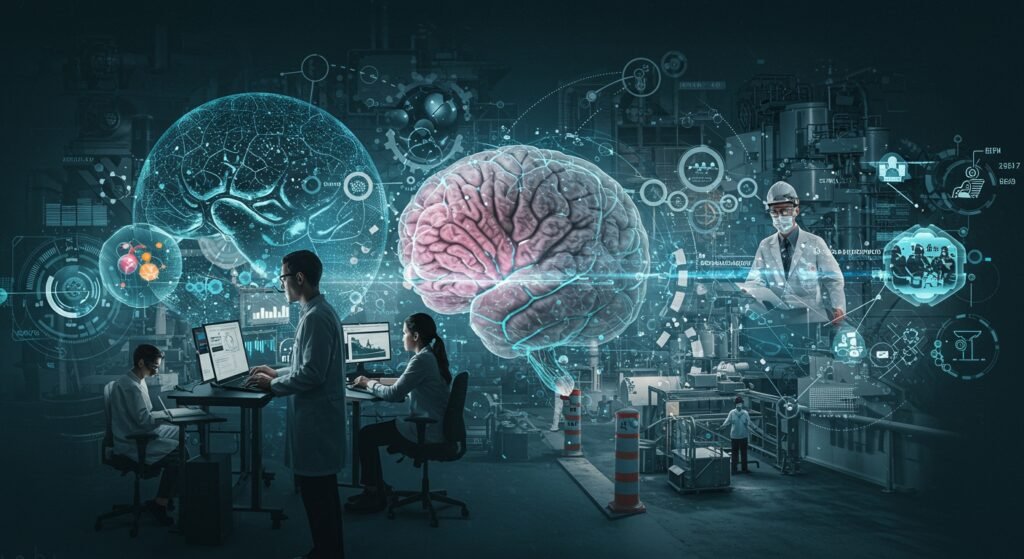Unlocking 7 Critical PhD Human Performance Focus Areas for a Safer World
Embarking on a doctoral journey is a significant step, and for those passionate about optimizing human capabilities within complex environments, a PhD human performance offers an incredibly rewarding path. This specialized field delves deep into how humans interact with systems, technology, and their surroundings, aiming to enhance efficiency, well-being, and, most critically, safety. With advancements in AI, automation, and increasingly intricate operational landscapes, the demand for experts in human performance and safety systems has never been higher. A PhD in this area prepares you to be a leader, innovator, and researcher at the forefront of creating safer, more effective human-centered designs and policies.
Table of Contents
- Understanding PhD Human Performance: A Critical Field
- Key Focus Areas in Human Performance and Safety Systems
- Cognitive Ergonomics and Human-Computer Interaction
- Organizational Safety Culture and Management Systems
- Human Factors in Complex Systems (e.g., Aviation, Healthcare)
- Resilience Engineering and Accident Prevention
- Data Analytics and AI for Safety Enhancements
- Human-Automation and Human-Robot Interaction
- Training, Simulation, and Performance Optimization
- The Impact of Your Research
- How to Choose Your PhD Path
Understanding PhD Human Performance: A Critical Field
A PhD human performance program is designed for individuals who wish to conduct advanced research and contribute new knowledge to the understanding of human capabilities and limitations, particularly in high-stakes or demanding settings. This interdisciplinary field draws from psychology, engineering, computer science, industrial design, and even sociology. Researchers explore phenomena like decision-making under stress, workload management, error causation, and the design of intuitive interfaces. The ultimate goal is to create systems where humans can perform optimally, minimizing risks and maximizing productivity and satisfaction.
Key Focus Areas in Human Performance and Safety Systems
Cognitive Ergonomics and Human-Computer Interaction
This area focuses on how mental processes (perception, memory, reasoning, motor response) affect interactions between users and other elements of a system. PhD research here might explore designing user-friendly interfaces for complex control rooms, understanding cognitive load in information-rich environments, or improving human-AI collaboration for decision support. It’s about tailoring systems to the human mind.
Organizational Safety Culture and Management Systems
Beyond individual human factors, this focus area investigates the broader organizational context that influences safety. Researchers might study the impact of leadership styles on safety outcomes, the effectiveness of safety reporting systems, or how to foster a robust safety culture within high-reliability organizations (HROs). This often involves qualitative and mixed-methods research.
Human Factors in Complex Systems (e.g., Aviation, Healthcare)
This research pathway applies human performance principles to specific, highly complex domains. For instance, a PhD candidate might investigate pilot fatigue in aviation, surgical team communication in healthcare, or human error in nuclear power plant operations. The goal is to identify unique challenges and develop tailored solutions for these critical sectors.
Resilience Engineering and Accident Prevention
Instead of merely preventing failures, resilience engineering focuses on how systems and organizations can adapt and recover from disruptions. PhD work in this area might explore how frontline workers improvise to maintain safety, how organizations learn from everyday operations, or the design of adaptive systems that can gracefully degrade rather than catastrophically fail. It’s a proactive approach to safety.
Data Analytics and AI for Safety Enhancements
With the explosion of data, this area is rapidly growing. PhD students might develop algorithms to predict human error patterns, design AI-powered systems for real-time safety monitoring, or utilize machine learning to analyze large datasets of incident reports to uncover hidden trends. This involves a strong foundation in computational methods and statistics.
Human-Automation and Human-Robot Interaction
As automation becomes ubiquitous, understanding how humans effectively collaborate with automated systems and robots is crucial. Research in this domain explores topics like trust in automation, allocation of functions between humans and machines, and designing intuitive robot interfaces to ensure safe and efficient co-existence in manufacturing, logistics, or even domestic settings.
Training, Simulation, and Performance Optimization
This area focuses on developing and evaluating effective training methodologies and simulation environments to improve human performance. A PhD project might involve designing advanced flight simulators, creating virtual reality training for hazardous tasks, or researching how different instructional strategies impact skill acquisition and retention for safety-critical roles.
Consider this overview of various research approaches:
| Focus Area | Typical Research Questions | Methodologies |
|---|---|---|
| Cognitive Ergonomics | How does display design impact operator vigilance? | Eye-tracking, performance testing, cognitive modeling |
| Organizational Safety | What factors contribute to a strong safety culture in hospitals? | Surveys, interviews, ethnographic studies |
| Human Factors in Aviation | How does fatigue affect pilot decision-making? | Flight simulators, physiological monitoring, incident analysis |
| Resilience Engineering | How do frontline workers adapt to unexpected system failures? | Case studies, observation, critical incident technique |
| Data Analytics for Safety | Can AI predict potential human errors in manufacturing? | Machine learning, statistical modeling, data mining |
The Impact of Your Research
A PhD in human performance and safety systems isn’t just about academic pursuits; it has profound real-world implications. Your research could lead to safer medical devices, more intuitive cockpit displays, improved safety protocols in industrial settings, or better training programs that save lives. Graduates often find roles as researchers in academia, industry (e.g., tech companies, aerospace, healthcare), or government agencies dedicated to safety and regulation.
For those interested in the broader scope of career opportunities, exploring resources like the Human Factors and Ergonomics Society can provide valuable insights into industry trends and professional networks.
How to Choose Your PhD Path
Selecting a PhD human performance focus area requires careful consideration of your interests, strengths, and career aspirations. Look for faculty whose research aligns with your passions, as your supervisor will be a critical part of your doctoral journey. Consider programs that offer interdisciplinary opportunities and strong research infrastructure. You might also want to review our article on Exploring Master’s in Ergonomics: Benefits for foundational knowledge.
The path to a PhD is challenging but deeply rewarding. By contributing to the understanding of human performance and safety, you’ll play a vital role in making our world a safer, more efficient, and more human-centered place.


